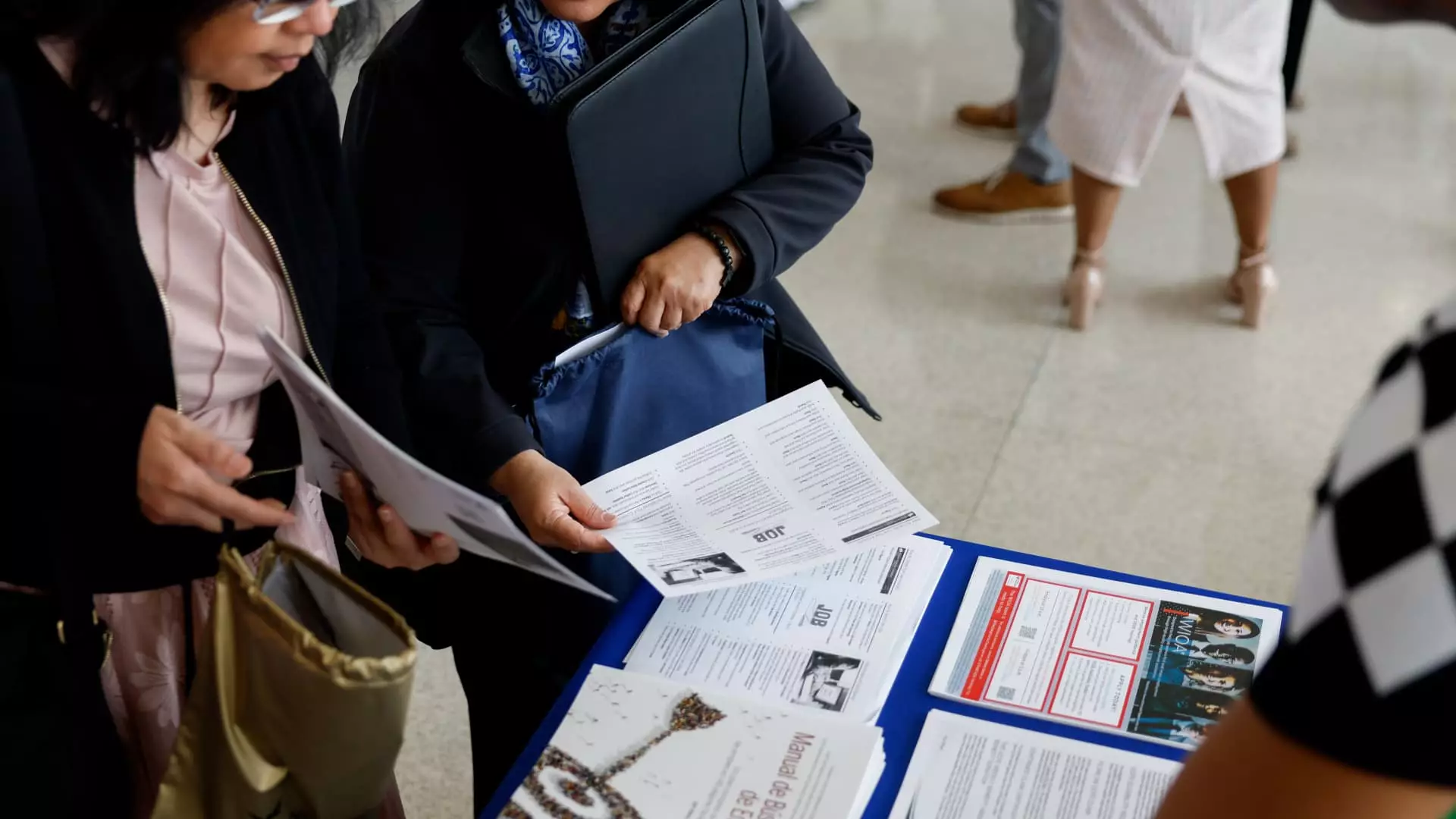In a landscape increasingly characterized by chaos, the job market presents a confusing paradox for job seekers, echoing sentiments of frustration and hope. While economists tout a notably low unemployment rate—floating around 4.2%—the reality for job seekers is far more grim. Even amidst surprising job growth that has seemingly outperformed expectations, securing a new position has become increasingly elusive. Business hiring rates are at their lowest since 2014, and a substantial 23.5% of jobless individuals find themselves caught in prolonged unemployment, having suffered for over six months. This stark statistic illustrates an unsettling reality that challenges the very fabric of economic optimism.
The “Low Firing, Low Hiring” Dilemma
Economist Cory Stahle aptly identifies this climate as a “low firing, low hiring” trend, which accentuates a growing chasm between those fortunate enough to maintain their employment and those left stranded in the unemployment pool. What happened to the bustling job markets a mere few years ago when vacancies seemed boundless, allowing workers to quit jobs in search of greener pastures? The current labor market is troubling, with professionals grappling to navigate this inhospitable terrain. Mandi Woodruff-Santos, a career coach and financial expert, emphasizes that companies are simply not hiring with the same urgency as in previous years. The implications of this stagnation paint an unnerving picture for individuals who haven’t experienced job hunting during a time like this.
The Psychological Toll of Economic Uncertainty
This turbulent job market is marred further by economic headwinds such as trade wars and a downturn in consumer confidence. The results are twofold: companies hesitate to bring in new talent, leaving skilled job seekers incredibly vulnerable. With whispers of a recession echoing in the background, the importance of sustaining a consistent employment trajectory becomes paramount. Stahle’s assertion that the labor market cannot indefinitely shield itself from the repercussions of deteriorating business sentiment is both a warning and a wake-up call for those seeking employment. Current economic uncertainties leave many job hunters feeling disheartened and overwhelmed, navigating an environment rife with inefficacy and despair.
The Shifting Dynamics of Job Searching
To the savvy job seeker prepared to face these challenges, adaptability becomes the name of the game. Navigating this murky water requires a shift in the approach to job searching. Jennifer Herrity, a career trends expert, warns that merely submitting resumes may no longer suffice. Instead, successful candidates will increasingly rely on the power of personal relationships and networking. This new landscape compels individuals to be not just passive job seekers but proactive networkers, engaging authentically and strategically. Woodruff-Santos emphasizes the importance of creating memorable human connections, cutting through the clutter to make an indelible impression. Old strategies give way to innovative tactics that focus on leveraging personal networks to secure opportunities before they ever make it to the job boards.
Creative Networking: Beyond the Obvious
Networking cannot remain confined to job fairs and conventional expos. Job seekers must eschew traditional methods and embrace a more creative approach, one that dives into relevant conferences and seminars not typically associated with specific job searches. For instance, attending a book signing by an author who specializes in artificial intelligence could open doors to pivotal connections in the tech industry. Re-engaging with former colleagues or mentors can yield opportunities that have yet to be disclosed publicly. Companies might be hiring, but in a landscape where competition is fierce, taking a strategic approach is critical.
Resumes That Resonate: Tailoring Your Approach
In this tightening job market, the importance of crafting a bespoke resume cannot be overstated. Individuals must move beyond generic templates; every resume should be tailored to reflect the requirements of a specific job. Herrity advises weaving in keywords from job descriptions and emphasizing quantifiable accomplishments rather than mundane duties. The goal is to present oneself as a results-driven candidate ready to deliver valuable contributions. Furthermore, for those grappling with long-term unemployment, utilizing any downtime to acquire new skills through low-cost or free courses can be transformational, highlighting initiative and adaptability to potential employers.
Embracing Short-Term Roles and Flexibility
Lastly, flexibility needs to pervade every aspect of the job search. While the ideal position may not materialize immediately, embracing contract work or exploring adjacent industries can serve not merely as a stopgap but as an opportunity to expand one’s network and skill set. Herrity aptly notes that short-term engagements can act as a catalyst, enabling individuals to leap forward when their desired full-time roles eventually reveal themselves. In this unpredictable job market, adaptability and strategic thinking may very well be the fundamental traits that separate the successful from the stagnant.

